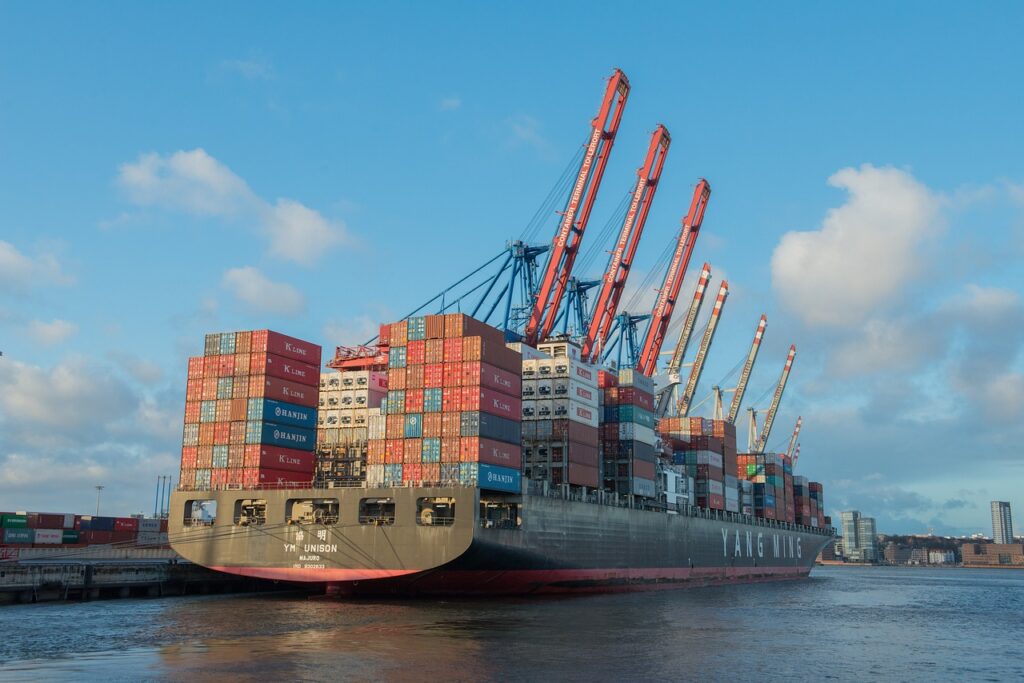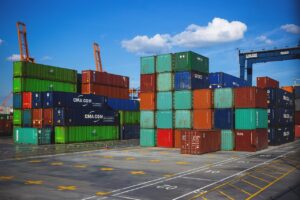1. Introduction to cargo containers in construction projects
Cargo containers, traditionally used for transporting goods across the globe, have found a new and innovative purpose in the construction industry. These steel structures, designed to withstand extreme conditions, are being repurposed as cost-effective building blocks for various construction projects. From residential homes to commercial complexes, cargo containers offer numerous advantages, including significant cost savings, streamlined construction processes, and environmental sustainability. In this article, we will explore the compelling reasons why using cargo containers in construction projects can lead to substantial financial benefits, efficient project completion, and a greener approach to building.
1. Introduction to cargo containers in construction projects
1.1 What are cargo containers?
Cargo containers, also known as shipping containers, are large standardized metal boxes designed for transporting goods across long distances. These containers are constructed to be sturdy, weather-resistant, and easily stackable, making them ideal for international shipping.
1.2 Brief history and evolution of cargo container usage in construction
While cargo containers have been used for transporting goods for decades, their utilization in construction projects is a more recent development. In the early 2000s, architects and builders began to recognize the potential of repurposing these containers as building modules.
This innovative approach gained traction due to the cost savings, flexibility, and eco-friendliness associated with using containers in construction. Today, cargo containers are being used in various construction projects, ranging from small-scale housing initiatives to large commercial buildings.
2. Advantages and cost savings of using cargo containers
2.1 Lower material and labor costs
One of the primary benefits of using cargo containers in construction is the significant cost savings that can be achieved. These containers provide a readily available structure, eliminating the need for extensive material sourcing and fabrication. Additionally, the reduced construction time translates into lower labor costs.
2.2 Reduction in construction time and project completion
By using pre-manufactured cargo containers, construction projects can be completed at a much faster pace compared to traditional building methods. The containers arrive on-site almost ready for assembly, minimizing the time spent on extensive on-site construction work. This expedited process can save both time and money, allowing projects to be completed ahead of schedule.
2.3 Enhanced durability and longevity
Cargo containers are built to withstand the harsh conditions of international shipping, making them exceptionally durable and long-lasting. Their sturdy design allows them to resist extreme weather events and provide a safe and secure structure. This durability translates into reduced maintenance and repair costs over the lifespan of the building.
3. Design and customization options for cargo container construction
3.1 Modifying container structures for various applications
Cargo containers can be easily modified and transformed into versatile structures suitable for different purposes. Whether it’s a modern office space, a cozy residential unit, or even a pop-up store, containers can be customized to meet specific design requirements. The ability to stack and arrange containers in various configurations offers endless design possibilities.
3.2 Integrating utilities and services into container designs
Containers can be equipped with all necessary utilities, such as electrical wiring, plumbing, and heating/cooling systems. These services can be seamlessly integrated into the container’s design, ensuring a comfortable and functional space. The ability to incorporate these utilities during fabrication further reduces on-site construction time and costs.
4. Streamlined construction process and time savings with cargo containers
4.1 Prefabrication and off-site construction using cargo containers
Cargo container construction often involves prefabrication and off-site assembly. This means that a significant portion of the construction work, including customization and utility installations, can be carried out in a controlled factory environment. Once completed, the containers are transported to the site, minimizing disruption and reducing on-site construction time.
4.2 Efficient assembly and on-site installation of container structures
The assembly process of cargo container structures is relatively straightforward and efficient. Containers are simply stacked, welded, or bolted together, allowing for rapid on-site installation. The simplicity of this process not only saves time but also reduces the need for specialized construction equipment and skilled labor, resulting in additional cost savings.
By embracing the use of cargo containers in construction projects, builders can realize substantial cost savings, reduce construction time, and create durable structures with unique design possibilities. With their versatility and efficiency, cargo containers are revolutionizing the construction industry while providing a sustainable and cost-effective solution. Happy building!
5. Cost-effective transportation and logistics of cargo containers
Transporting construction materials can be a major expense in any project. However, using cargo containers can significantly reduce these costs.
5.1 Utilizing container shipping networks for cost savings
One of the biggest advantages of using cargo containers in construction is the access to well-established container shipping networks. These networks allow for efficient transportation of materials across long distances at a fraction of the cost of traditional methods. By tapping into these networks, construction projects can save on transportation expenses and pass those savings onto the overall project budget.
5.2 Challenges and considerations in container transportation
While container transportation offers cost savings, it does come with some challenges. The size and weight of cargo containers may require special permits and equipment for transportation. Additionally, careful planning is required to ensure the containers can be easily loaded and unloaded at the construction site. By addressing these considerations upfront, construction projects can maximize the cost savings while minimizing logistical hurdles.
6. Environmental sustainability and reduced waste in construction with cargo containers
In addition to cost savings, cargo containers also offer significant environmental benefits in the construction industry.
6.1 Recycling and repurposing containers for eco-friendly construction
One of the most compelling aspects of using cargo containers is their potential for recycling and repurposing. Instead of using new materials, containers can be reused in construction projects, reducing the demand for additional resources. This eco-friendly approach not only saves money but also contributes to a more sustainable construction industry.
6.2 Minimizing construction waste and environmental impact
Construction projects often generate a significant amount of waste. However, cargo containers can help minimize this waste by providing a controlled and contained environment. The use of prefabricated containers allows for more precise material estimation, reducing the chances of excess waste. Additionally, container construction techniques often involve modular designs, which can be easily disassembled and reused in other projects, further reducing environmental impact.
7. Case studies and success stories of cost savings using cargo containers
Real-world examples highlight the potential cost savings of utilizing cargo containers in construction projects.
7.1 Residential projects utilizing cargo container construction
Numerous residential projects have successfully implemented cargo container construction, resulting in significant cost savings. By opting for containers, homeowners have been able to reduce construction timelines, lower labor costs, and achieve unique architectural designs, all while staying within budget.
7.2 Commercial and industrial applications with significant cost savings
Cargo containers have also proven to be beneficial in commercial and industrial applications. From office spaces to retail shops and even large-scale industrial facilities, the utilization of containers has resulted in substantial cost savings. These success stories demonstrate how container construction is not only financially viable but also offers flexibility and durability for various business needs.
8. Considerations and challenges of implementing cargo containers in construction projects
While cargo containers present many advantages, there are still considerations and challenges that need to be addressed when using them in construction projects.
8.1 Structural and building code requirements for container construction
Building codes and regulations vary from one jurisdiction to another, and it’s crucial to ensure that container construction meets all structural and safety requirements. Working with experienced professionals and obtaining appropriate permits will help navigate these challenges and ensure compliance with building standards.
8.2 Addressing misconceptions and overcoming resistance to container usage
Despite the numerous benefits, there are still misconceptions and resistance towards using cargo containers in construction. Some may perceive them as unattractive or lacking in quality. Overcoming these misconceptions involves showcasing successful projects, emphasizing the cost savings and environmental benefits, and highlighting the versatility of container construction to address various design aesthetics.
By considering both the advantages and challenges involved, construction projects can make informed decisions about incorporating cargo containers, ultimately reaping the significant cost savings and environmental benefits they offer.
In conclusion, the utilization of cargo containers in construction projects offers undeniable cost savings and numerous advantages. From reduced material and labor costs to streamlined construction processes and time savings, these versatile structures have proven to be a cost-effective alternative. Additionally, the environmental sustainability and reduced waste associated with cargo container construction contribute to a greener approach to building. As more success stories and case studies emerge, it becomes evident that cargo containers are not just a temporary trend but a practical solution for the future of construction. By embracing this innovative approach, the industry can embrace both financial savings and environmental consciousness.
Frequently Asked Questions (FAQ)
1. Are cargo containers structurally sound for construction purposes?
Yes, cargo containers are built to withstand extreme conditions during transportation, making them inherently strong and durable. When properly modified and reinforced, they can meet structural requirements for construction projects.
2. Can cargo container construction save money compared to traditional building methods?
Absolutely. One of the main advantages of cargo container construction is its potential for significant cost savings. With lower material and labor costs, streamlined construction processes, and reduced project completion times, using cargo containers can be an economical choice for many construction projects.
3. How customizable are cargo containers for different building purposes?
Cargo containers offer a high degree of customization. They can be modified and adapted to suit various building applications, including residential, commercial, and industrial projects. With the ability to integrate utilities and services into container designs, they offer flexibility in meeting specific project requirements.
4. Are there any limitations or challenges when using cargo containers in construction?
While cargo containers offer numerous benefits, there are some considerations and challenges to keep in mind. These include meeting structural and building code requirements, addressing misconceptions and resistance to container usage, and handling transportation logistics. However, with proper planning and expertise, these challenges can be overcome to successfully implement cargo containers in construction projects.








